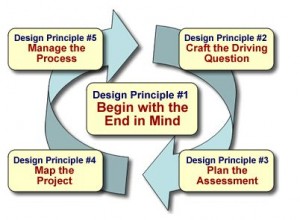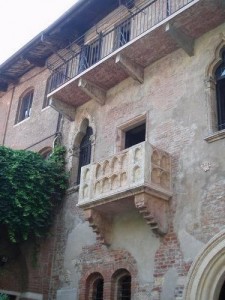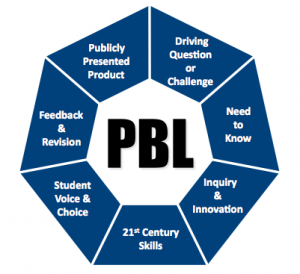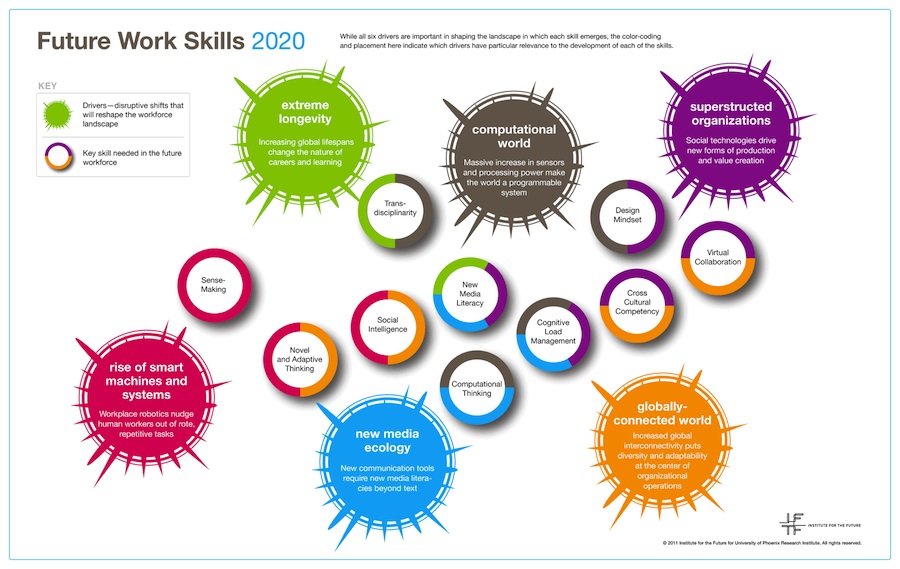I’ve been reading about Project Based Learning for some time now, and I struggled trying to find a way to integrate this kind of pedagogy into my regular classroom practice. I think I do a fairly good job of challenging my students and getting them to think beyond the obvious, but my English classes do tend to follow what would be perceived as traditional structure.
 This last term we studied Shakespeare’s Romeo and Juliet. We did make a decision early on to plan the unit using the principles of Understanding by Design (Wiggins & Tighe) and this meant we had a driving question to help us focus. Our question was, ‘What drives the choices we make?’
This last term we studied Shakespeare’s Romeo and Juliet. We did make a decision early on to plan the unit using the principles of Understanding by Design (Wiggins & Tighe) and this meant we had a driving question to help us focus. Our question was, ‘What drives the choices we make?’
It took us some time to get to this question in one of our planning sessions, but I’m so glad we went to the effort of doing this. I referred to this question constantly throughout our study, and it really helped the students to think carefully about the motivations of the characters and the circumstances surrounding the tragic outcome of the play. I’m not ashamed of saying that my instruction involved some fairly explicit teaching in that we examined the text thoroughly and focused on key scenes.
Our classroom was full of spirited discussion and some moments where we employed drama techniques, but our intent was to understand the complexities of the play in order to respond effectively in a text response essay at the completion of our study. That my students did, and quite impressively I might add.
For the last two weeks of term, we’d decided that we would try and have students do something creative in response to Romeo and Juliet and also have them work on a multimodal task as per the requirements of Australian Curriculum. [See Jenny’s complete post at Lucacept for details of the curriculum requirements.]
Ramping up our multimodal task
Now our usual course of action would have been to develop a task and have the kids make some choices about what presentation method they would use to explore it — and our focus in terms of assessment would have been on the outcome.
I’m sure we’ve all been there. You have your students working in groups, but invariably there is one group member who either chooses to do the bulk of the work because they want to achieve a good result and can’t bear to have the rest of the group let them down, or someone gets left to carry the can for members who slack off.
In these kinds of instances I have marked group members differently, but it is sometimes difficult to ascertain who has done what, particularly if they’re working in friendship groups, and they don’t want to fracture the relationship so they cover for the group members who aren’t really pulling their weight.
My reading in relation to Project Based Learning told me there was another way, so I did what comes naturally to me and suggested to the other team members that we try something different with this and give PBL a go. For those of you with no concept of PBL, here’s some information from the Buck Institute site that outlines features of a PBL unit:
- is intended to teach significant content.
- requires critical thinking, problem solving, collaboration, and various forms of communication.
- requires inquiry as part of the process of learning and creating something new.
- is organized around an open-ended Driving Question.
- creates a need to know essential content and skills.
- allows some degree of student voice and choice.
- includes processes for revision and reflection.
- involves a public audience.
These points are elaborated here – I suggest you take a look.
My teacher teammates were new to the ideas surrounding PBL, so we spent one of our planning sessions exploring the writings of Bianca Hewes, an English teacher in Sydney who uses PBL extensively in her classroom. We also looked more deeply into the Buck Institute PBL site. Once you’ve registered there (it’s free), you gain access to a range of curriculum resources that can help guide you through the process.
After we’d looked at Buck’s collaboration and presentation rubrics, we could see that this was a far better approach than the usual multimodal task. The reality for us was that this was going to be an assessment task, only this time what we’d be doing is assessing collaborative skills and the process that leads to the outcome. The proved to be a far better way of measuring student input — one that ensured we could assess students based on their contribution.
Sharpening the hook
A good PBL task has a ‘hook’ lesson to get the kids motivated. We knew we needed to convince our students that what they were going to be doing was of benefit to them, so we focused on a report called Future Work Skills – 2020 (Institute for the Future, 2011), which is well worth reading. The following visual is a representation of the ideas contained in the report (click to enlarge).
I think it was really useful using this with our students. It certainly got them thinking and provoked some spirited discussion. It’s also something I intend to revisit with them at the end of this task so we can evaluate what key skills we’ve addressed throughout the course of our project-based learning.
Our student assignment
Our driving question became the basis for the task. Here’s what we used with our students to help them get a handle on what they were going to be doing:
We have just finished our study of William Shakespeare’s ‘Romeo and Juliet’. While we were investigating the play, we used the following driving question to frame some of our discussion:
What drives the choices we make?
Working in groups, you are going to be creating some form of multimodal response to this driving question. You can use some of the ideas presented from ‘Romeo and Juliet’ to frame your project, or you can take your project in a direction decided upon by members of your group.
Because we are studying English, we would like to see you incorporating writing, speaking and visual components to your task. Think about the following essential questions to help you develop a creative artifact:
‘A choice made today, will affect our lives tomorrow.’
‘What are the consequences of choosing wisely, or unwisely?’
To help get you and your group started, use this thinking routine to start generating some ideas:
- What do you think you know about this topic?
- What questions or puzzles do you have?
- How can you explore this topic?
Think about the skill set of the members of your group. How can the differing skills members of your group have help you develop an artifact from your investigation?
Our next three weeks of classes will be structured like this:
Week 1 – Investigation
Week 2 – Process
Week 3 – Presentation
We will be looking very closely at developing in you what are considered 21st century skills: critical & creative thinking, collaboration, self monitoring and self direction, leadership and project management skills.
Feedback from my PLN: “You choose the groups”
 I was concerned about grouping the students. Should we let them choose, or choose for them? After asking my Twitter network, it became clear that making the decision about groupings ourselves was going to be the way to go. This way, they’d have to work collaboratively with people outside of their normal social groupings. I decided to make groups of three, and this has worked very well.
I was concerned about grouping the students. Should we let them choose, or choose for them? After asking my Twitter network, it became clear that making the decision about groupings ourselves was going to be the way to go. This way, they’d have to work collaboratively with people outside of their normal social groupings. I decided to make groups of three, and this has worked very well.
Giving the students the task as outlined above was an interesting exercise. They were already sitting in their groups. It was eye-opening to watch their approaches to what they’d been presented with. Some groups settled down to proactive discussion immediately, while others floundered with the lack of parameters surrounding the task.
This is where you as a teacher really need to be on your game. This was definitely not a time to be watching events unfold. It was a time to be circulating, checking in, watching for clues and cues that some students weren’t comfortable. The thinking routine helped some groups focus, but other groups had students who were expressing agitation at the open nature of the task. These students in particular needed reassurance and to be reminded that this was something they must shape themselves. They needed to be thinking about the direction they would take and engaging in discourse to help ideas form.
Struggling with the lack of direction
The formation of ideas for each group’s PBL task extended into the following day. One of my students entered the room visibly unhappy about the task. She was one of the most capable students, but was finding this a real struggle.
I was concerned, but 10 minutes into the lesson I looked over to that group and was amazed to see smiles and animated discussion taking place. I moved over and asked what had transpired to change the mood. “We’ve got an idea!”, was the reply, and they were excitedly tossing around what they might do to make their idea a reality.
To focus this session, I used the ‘Compass Points’ thinking routine (from the Harvard Visible Thinking site) for examining propositions.
 E = Excited
E = Excited
What excites you about this idea or proposition? What’s the upside?- W = Worrisome
What do you find worrisome about this idea or proposition? What’s the downside? - N = Need to Know
What else do you need to know or find out about this idea or proposition? What additional information would help you to evaluate things? - S = Stance or Suggestion for Moving Forward
What is your current stance or opinion on the idea or proposition? How might you move forward in your evaluation of this idea or proposition?
I was doing a lot of circulating at this stage and monitoring progress. Two groups were working well, but were struggling to come up with a concrete idea. I asked if it would help if they heard from other groups about what their ideas were, and they were really interested in doing this.
So a sharing session ensued and this helped the strugglers get a handle on the direction others were taking and helped seed ideas for their own approach. One group still needed more direction, and I sat down with them and talked through what the strengths of the participants were. This helped them narrow an idea down to something that drew from their individual skill sets.
The buzz of engaged minds
What was reassuring during these sessions was hearing some students express excitement about what they doing. One group in particular, who formulated their idea really early, was just buzzing with the possibilities of what they would do and what the outcomes might be. One of these students was someone who had seemed tuned out during our exploration of Romeo and Juliet, and yet here she was now, animated and driving discussion.
One of the most memorable things this experience has shown me is the way some students power the group. Quite often, they are NOT the students who have been the shining lights in other classroom tasks. I’m getting insights into students that I wouldn’t have gleaned unless we were doing a task designed this way.
The technology piece
Now, where’s the technology in all this, you may ask? It’s sitting right alongside and working as an enabler and facilitator. We’re using Edmodo as our virtual collaborative sharing space. All the students joined the group I established, and then I created small groups within this group so they could discuss ideas outside of class time.
In Edmodo, when you’re the teacher you automatically become a member of each group formed. The space is visible only to you and to members of that group. I’ve made the students aware that I’ll be watching these group spaces carefully, as it’s another sign of their collaborative efforts and will help with the assessment end of things.
Again, it’s been interesting seeing who is sharing in these spaces and how the groups are using them for communication. One group is using a Google Doc for collaborative purposes and has it linked to their group. Their honesty is apparent in their reflections. For the most part, they’re certainly not afraid of acknowledging both their strengths and weaknesses.
The teacher works hard, too
As a teacher, I’ve been working hard. This is no ‘sit back and let it all unfold before your eyes’ kind of activity. This is constant checking, questioning, supporting, encouraging, monitoring kind of work. My energy levels need to be high so that I can keep their energy levels high.
For the last two weeks of term, as we worked on the investigation and process phase, I was chasing links in my Twitter stream and finding ways to connect them to our driving question, and was pouring over YouTube videos looking for examples of collaboration to help get across to them the importance of a group working as a team. Here’s one we looked at that really got us talking.
What the students are saying
What’s been incredibly encouraging is the spoken feedback I’m getting from students. I’ve heard some say they are enjoying the challenge of thinking, of directing their own learning, of working with people they don’t normally mix with. One student stayed back after class to tell me how much she was enjoying learning this way and that she’d never thought it would be possible to work like this in an English classroom.
Many are excited about their ideas and are genuinely interested in seeing them come to fruition and sharing their artifact with others. Most of them have structured manageable tasks, but some have been ambitious. I’ve made a point of saying to them repeatedly that it’s the collaborative work and it is the process that’s important here. If what they come up with falls short of their plans due to time restraints, it’s still possible to do very well on this task if they have done what is expected from them.
As teachers, we decided to weight collaboration most heavily for their assessment and the students know this. They’ve been provided with the assessment breakdown so they know what they are working towards.
A classroom climate of trust
And that brings me to what I think is probably the most important element of this PBL task: our classroom climate and their level of trust in me.
I work incredibly hard in my classes to establish a respectful classroom climate where sharing is encouraged. I try to take an interest in my students and develop positive relationships with every one of them. This doesn’t mean I’m a pushover – far from it. I have high standards and expect all of them to work to the best of their ability, and I’ll ride them if they falter in this.
My feeling is that there is trust in our classroom. They know I’m working hard for them and they trust me to make the right call in relation to their performance. If we didn’t have this, I’m not sure I’d be feeling so positive about this collaborative PBL task, and I’m pretty sure they wouldn’t be either.
More to come: A real audience
 It’s not over. During our school holiday break, some of the groups have been creating their videos, testing their theories, writing their blog posts, making their books, interviewing their subjects, or pursuing whatever other method of capture for their ideas they’ve come up with.
It’s not over. During our school holiday break, some of the groups have been creating their videos, testing their theories, writing their blog posts, making their books, interviewing their subjects, or pursuing whatever other method of capture for their ideas they’ve come up with.
When we return, it’s to a lesson where they can come together as a team again to plan their presentation that will take place in the first week back. We’ve asked them to think about audience, and we’ve suggested they invite people in to view their presentations to meet the requirement of having a public audience. I’m not sure if this is going to happen for all groups, but we have organised for a combined session where the Yr 10 cohort will come together as a group and each small group can showcase something from their task they’d like to share with everyone.
I am very much looking forward to seeing their completed tasks. Spending time with them all in their investigation and process stages has me excited about the possibilities of what sharing will take place in the presentation phase.
Passionate teaching
From my perspective, this has been one of the most rewarding activities I’ve been involved in this year. I’m invested in it and can feel that passion for what I do apparent when I’m interacting with the students.
I’m not sure if what we’ve accomplished is entirely true to PBL, but I do know we’ve done our level best to understand the process and try to make it happen. It’s exciting and it’s meeting some of the achievement standards of the Australian Curriculum for Yr 10 English as well as quite a few of the elements of the General Capabilities.
Once again, my thanks go to Bianca Hewes for being such an inspiration and for helping me to see how PBL can fit into the structure of our curriculum. I’ll keep you posted as to what transpires.
[Watch for Jenny’s second post, describing her students’ presentations, coming here soon!]
Jenny Luca
Latest posts by Jenny Luca (see all)
- Venturing into Project-Based Learning - October 19, 2012
- How to Prepare for a TEDx Talk - September 7, 2012
- TED in My Classroom - March 16, 2012




Excellent post. Thank you for it. I am exploring PBL in my grade 12 history class and I will be coming back to this post for guidance. I really liked your questions:
What do you think you know about this topic?
What questions or puzzles do you have?
How can you explore this topic?
I think these questions will help me help the students get started, which I often think is one of the major stumbling blocks.
I also agree with your comment that the teacher is also working hard, despite not “teaching”. I was explaining to a new teacher my goal of trying out PBL and she said, “Wow. That must be so easy for you.” I just smiled and nodded.
Thank you Jenny! Your account of how you approached the process is just so helpful. I am also working on a PBL/Ubd approach to a unit at the moment. I’ve been reading heaps, downloaded templates and guides from BIE, etc. But what has really helped me the most has been reading everything Bianca Hewes has written on her #pbl journey and gleaning wisdom and ideas from others like you who have documented and shared their experiences. I have used pseudo PBL approaches before, but now that I am charged with leading a team of teachers through the process, I am hyper conscious of ‘getting it right’. Your post provides a fantastic description that I can share with colleagues. You explain not only how to approach PBL but also what sets it apart from more traditional teaching and why this is so valuable. Thanks again!